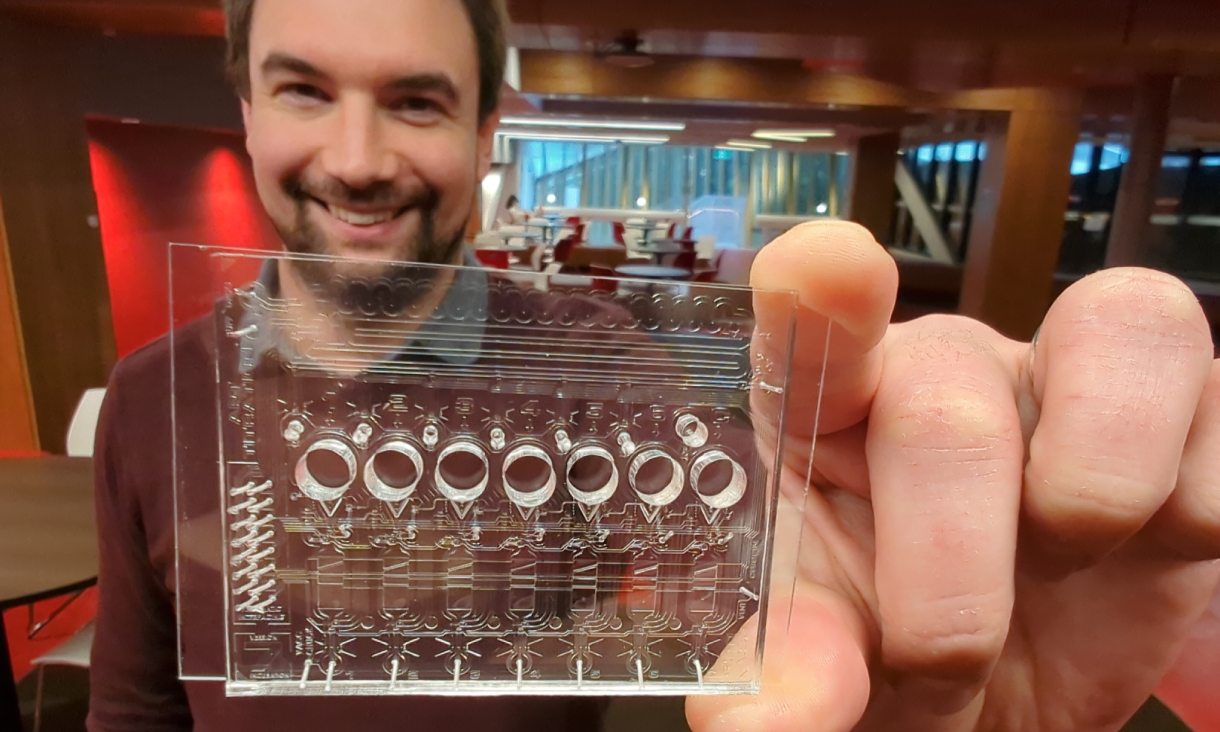
Malaria is a mosquito-borne infectious disease that results in 229 million cases worldwide every year – of which children under five account for 67 per cent of all malaria deaths.
There is currently no cure, and, while anti-malarial medication exists, their effectiveness is decreasing due to drug-resistance. New treatments are needed urgently, and thus we need a way to rapidly test their efficacy in a non-invasive way.
Because it is not possible to isolate a malarial infection event in the body, the next best option is to recreate this event in real-time outside the body.
However, this presents many challenges as it is difficult to emulate how blood mixes within the body, and even more difficult to perfectly position a healthy and infected cell close enough to one another to observe the infection in real-time.
In a collaboration between Walter and Eliza Hall Institute of Medical Research (WEHI) and our Integrated Photonics and Applications Centre (InPAC), the team is hoping to capture both a healthy and infected cell closely enough together to watch the infection process.
The team used a technique called microfluidics – like plumbing but at the micro scale – which includes pumps and valves that can precisely isolate and move around tiny volumes of liquid.
With a toolbox of channels, pumps, valves and traps that our Postdoctoral Researcher Crispin Szydzik developed over the last decade, David Bryan was able to pick and choose specific modules to suit the technical challenge.

Recreating, then isolating this needle-in-a-haystack event outside the body is starting to become a reality. The team has developed a way to capture healthy red blood cells in a ‘trap', however it remains a challenge to isolate a healthy blood cell and parasite in close proximity.
Future work will focus on adjusting the microfluidics device design to trap healthy red blood cells and parasites together to watch the infection event in real-time.
With this method, the team aim to rapidly test the efficacy of drugs in a non-invasive way, with the hope of finding a cure for malaria to save lives.
Postdoctoral Research Fellow, Integrated Photonics and Applications Centre, RMIT.
PhD Student at Walter and Eliza Hall Institute of Medical Research
Integrated Photonics and Applications Centre, RMIT.
Read more about the work that the Walter and Eliza Hall Institute of Medical Research are doing here.


RMIT University acknowledges the people of the Woi wurrung and Boon wurrung language groups of the eastern Kulin Nation on whose unceded lands we conduct the business of the University. RMIT University respectfully acknowledges their Ancestors and Elders, past and present. RMIT also acknowledges the Traditional Custodians and their Ancestors of the lands and waters across Australia where we conduct our business - Artwork 'Sentient' by Hollie Johnson, Gunaikurnai and Monero Ngarigo.
Learn more about our commitment to Indigenous cultures